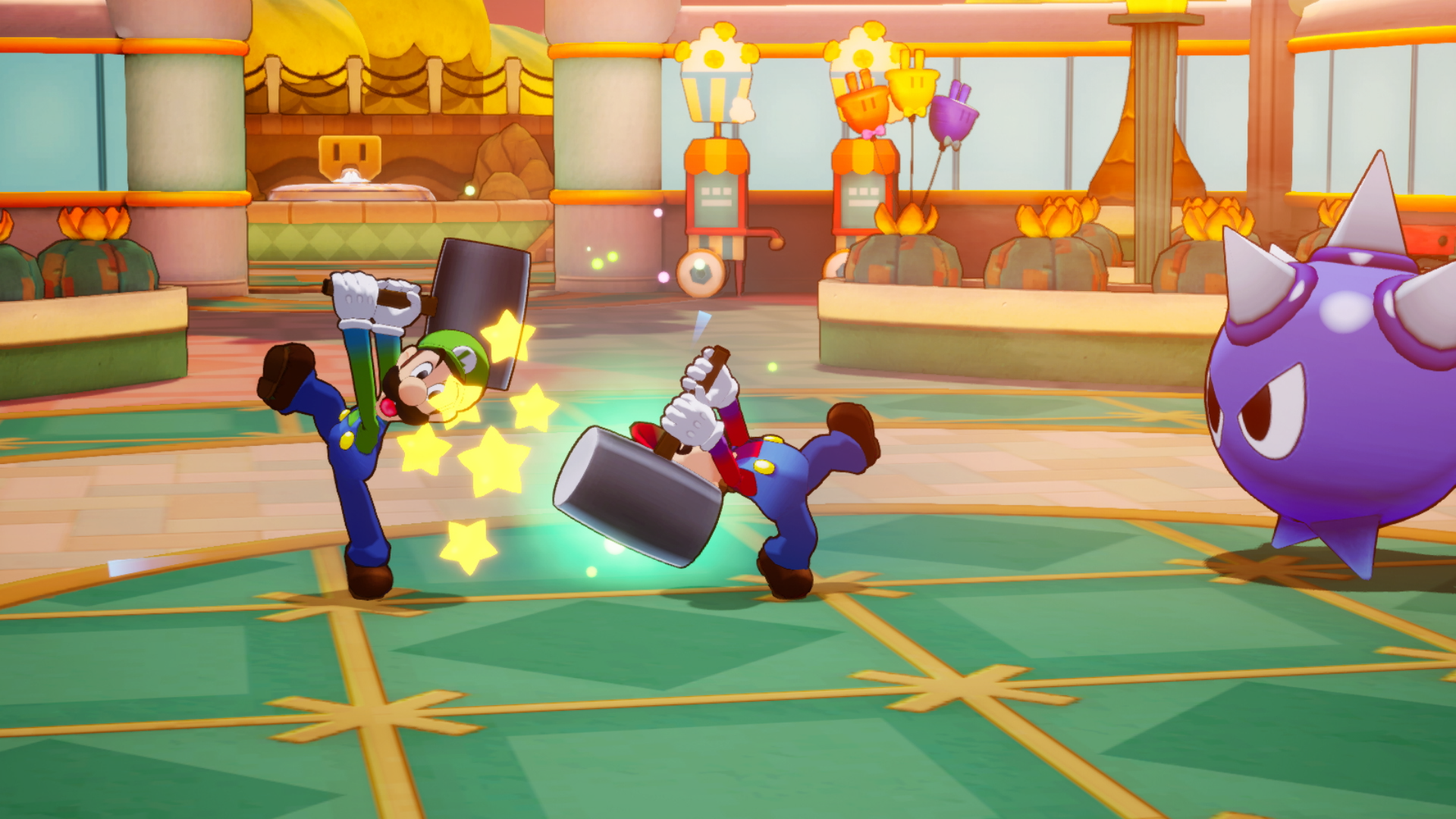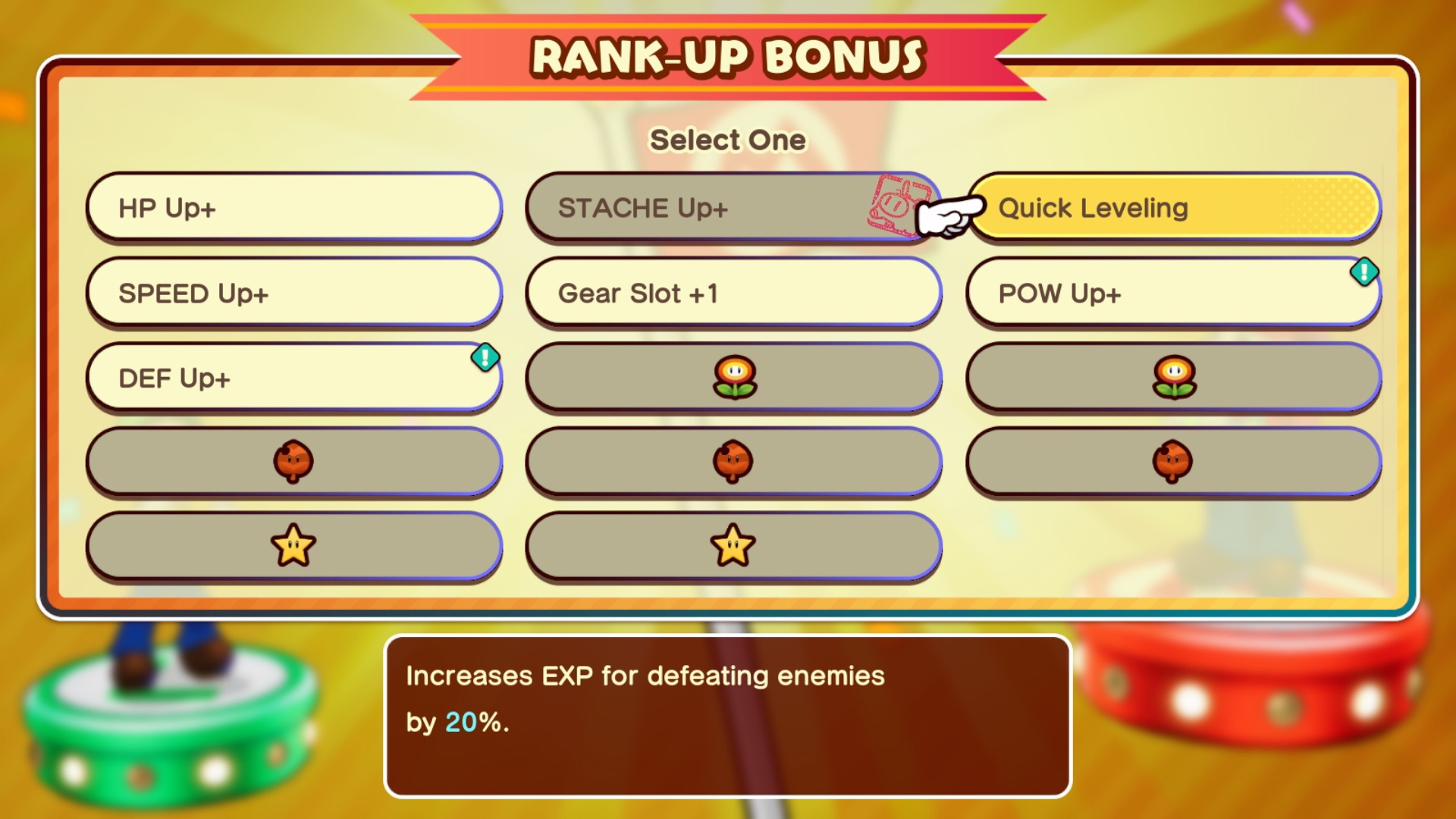
The first new Mario & Luigi game in nearly a decade is the long-awaited return to Nintendo’s wonderful sub-franchise of action role-playing games. Mario & Luigi: Brothership evokes memories of the Mario Bros.’ lighthearted and colorful story-driven games, plus those of other Nintendo games, like The Legend of Zelda: The Wind Waker and Spirit Tracks.
More surprising is how much Metal Gear Solid 5: The Phantom Pain I felt radiating from Mario and Luigi’s newest outing.
Mario & Luigi: Brothership sends Mario and Luigi on a mission to reconnect a broken world known as Concordia by reconnecting the land’s disparate and disconnected islands. Mario and Luigi travel across the seas of Concordia on an island of their own, a vessel known as Shipshape Island. As they solve the citizens of Concordia’s problems by sailing to new islands, linking them with Concordia’s mystical Uni-Tree, they’ll add new crewmates to Shipshape Island, packing it with vendors and supporters of the bros’ cause.
In other words, Shipshape Island is the Mother Base of Mario & Luigi: Brothership, an ever-expanding and more powerful structure in the ocean where Concordia’s citizens (and even some from the Mushroom Kingdom) can find a new home.

During a recent hands-on demo with Mario & Luigi: Brothership held by Nintendo in New York, I got to play a few hours of the upcoming Switch game. What I played felt very familiar, as a longtime fan of the Mario & Luigi game series, but with some new tactical options that should help keep Brothership feel fresh over its long journey. Mario & Luigi: Brothership looks to add narrative choice and combat depth compared to previous entries, but also features plenty of concessions to welcome new and younger players to the Mario & Luigi series.
One of Mario & Luigi: Brothership’s new innovations is a mechanic called Luigi Logic. While Mario and Luigi typically travel as a pair, Luigi Logic will send Mario’s brother off on tasks of his own, to solve light environmental puzzles or smash up crates with goodies inside. As I explored Brothership’s various islands, it was clear when Luigi Logic needed to be employed; objects in the environment would light up and Luigi himself would give an alert if he had something to contribute.
My first destination in exploring Concordia was a location known as Twistee Island. After launching Mario and Luigi from Shipshape’s cannon — a fitting form of travel for the franchise — I landed on Twistee to find its denizens in distress. Joined by the piglike helper Snoutlet, I guided Mario and Luigi on a mission to restore the island’s life-giving tree, the Twisten Sprout. After speaking to various NPCs, I learned that the Twisten Sprout requires music and good vibes to thrive — and only Twistee Island’s local artist Groovemaster Dyode can restore that wilted plant.

To help get Dyode’s groove back, and that of Twistee Island, I needed to track down some hair wax for the performer. His vibe was off due to his limp coif, and only local hair wax dealer Spiralia could save the day. Thus began a trek up Twistee Island, where an infestation of troublesome fauna stood in Mario and Luigi’s way.
Battling those bad guys takes the form of turn-based and timing-based battles. Mario and Luigi are armed with hammers and the ability to boot-stomp enemies, and each of those attack types has its strengths and weaknesses. Hammers are useless against flying enemies, and jump attacks are ineffective against spiky enemies. That’s been the norm for Mario & Luigi games for nearly two decades.
Mario and Luigi have many more moves at their disposal, nearly all of them team-up moves that involve both bros and carefully timed button presses. These Bros. Attacks include offensive moves that involve kicking shells and throwing fireballs — classic Super Mario Bros. stuff. Mario & Luigi: Brothership mixes things up, however, with a new system called Battle Plugs. These power-ups can give Mario and Luigi special offensive and defensive abilities, like the option to do a Kaboom Attack, which emits a shockwave that damages nearby enemies after a jump attack, and Easy Peasy Counters, which makes counterattacks nearly automatic.

Players can initially equip only two Battle Plugs at a time, but can unlock more slots as they progress. Battle Plugs can also unlock new abilities with the right combination, so players are encouraged to mix and match. (Battle Plugs also have limited charges, and need to recharge, basically forcing players to swap them in and out.)
Mario and Luigi can craft Battle Plugs using a collectible resource known as Sprite Bulbs. The more plugs you craft, the more you unlock. In my hands-on time with the game, I saw quite a few, including:
- Surprise Iron Ball, which drops a spiked metal ball onto the battlefield to damage enemies if you land an “Excellent” timed attack
- Surefooted Guard, which prevents the effects being tripped or dizzied by a foe
- Auto Mushroom, which will automatically give Mario or Luigi a life-restoring mushroom when they’re at low health
- Anti-Spike Specialist, which delivers guaranteed critical hits when using a hammer against a spiky enemy
- Anti-Flying Specialist, which delivers guaranteed critical hits when using a jump attack against a flying enemy
- Dizzifying Attack, which stuns enemies, putting them out of commission for a turn
I also experienced one special combo of Battle Plugs: Iron Ka-Ball, which combines Kaboom Attack and Surprise Iron Ball to drop spiked metal balls on all enemies who are hit by the shock wave of a Kaboom Attack.

Outside of battles, Mario and Luigi can team up for Bros. Moves, special acrobatic moves that help them navigate environments. In one, Mario and Luigi started dancing the tango, then transformed briefly into a flying saucer, helping them overcome a wide gap that was too far to jump across.
Once I’d restored Groovemaster Dyode’s hair to its perfect pompadour form with Twistee Island hair wax — and after Mario and Luigi were tasked with dancing to Dyode’s tunes in a short rhythm game — the bros reestablished the island’s connection to the Uni-Tree. Doing so grants access to Twistee Island’s citizens on Shipshape and a bunch of side quests, which I didn’t get a chance to explore, but look forward to.
Beyond Twistee Island lies much more, including Merrygo Island, a theme park-themed location, and Lottacoins Island, an economic hub of Concordia apparently populated by depressed office workers. The game’s islands seem thematically varied, and the ocean on which Mario and Luigi will explore via Shipshape looks huge — and full of secrets.

Mario & Luigi: Brothership plays like a solid, if somewhat familiar-feeling, entry in the Mario & Luigi franchise. The most enticing aspects of it are the depth of combat, a branching narrative, and a cast of colorful electrical outlet-themed characters. I have some reservations about how it plays — the game’s performance was a little chunky and battles didn’t feel as snappy as past handheld Mario & Luigis did — but I’m still excited about a new entry in the Mario & Luigi franchise nonetheless.
Mario and Luigi’s island adventure will be released on Nov. 7 for Nintendo Switch.
